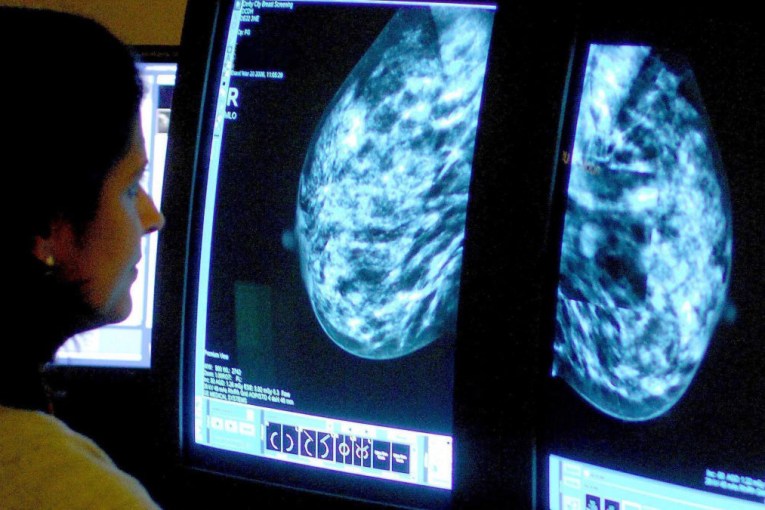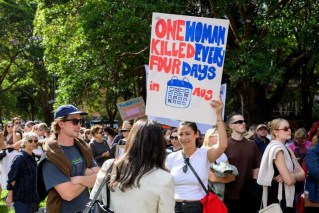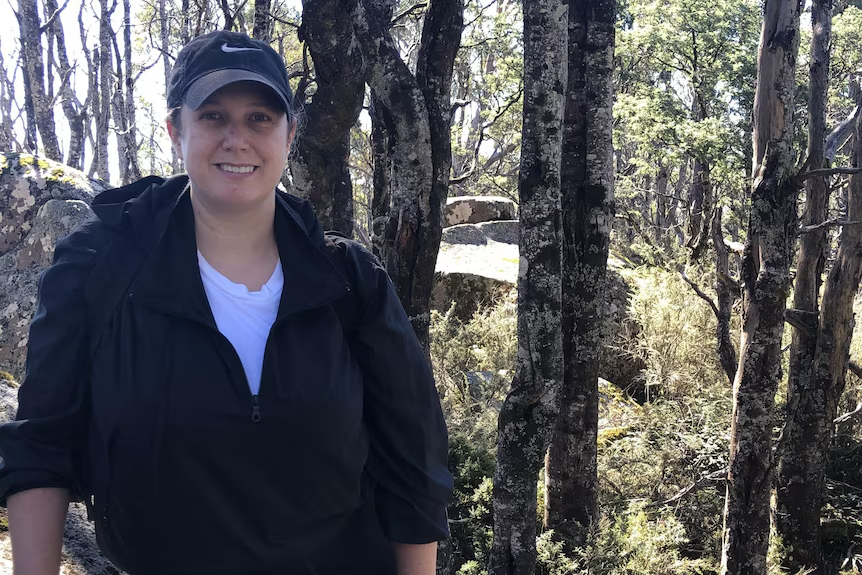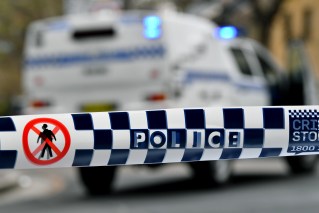‘No food, no water’: Desperation in flood-isolated communities

Source: Facebook/Gavin Dear
Isolated communities that have been cut off for days are running out of food, water and diesel and are “desperate” for resupplies, as receding floodwaters reveal damage across far north Queensland.
Douglas Shire Mayor Michael Kerr said pockets north of Cairns, such as Cape Tribulation, had not been resupplied for a week.
“We’ve got people yelling out now they’re desperate. They need assistance now and this was coming yesterday,” Kerr told The Guardian on Tuesday.
“There was one lady who got a message out from Cape Tribulation this morning that they are desperate, they’ve got no petrol left in the generator.
“They’ve got no food, they’ve got no water. They are absolutely struggling. They need help. Where is everyone?”
Tweet from @hqjoc
A woman at Wonga Beach, south of the Daintree River, posted on Facebook that people had “no water, no power, food is running out”.
“We have woken to no rain for [the] first time since this started and we know we have survived an unprecedented absolutely catastrophic event here, with just our wits to keep us going.”
Queensland Police Deputy Commissioner Shane Chelepy said agencies were working to deliver necessities on Tuesday, as well as check on the welfare of people in more than 32 communities in isolated areas.
“The resupply efforts into areas like Mossman, Cooktown, and our other isolated communities has commenced.
“We are aware of the essential need to get food, water and, in particular, medical supplies into those communities – and that is occurring today.
“We know that a number of those communities have been without power and water.
“I assure the community that we are aware of that and that those resupply efforts will commence today, and we have plans in place.”
As the disaster moved from rescue to recovery, Prime Minister Anthony Albanese and Queensland Premier Steven Miles made special mention of emerging stories of heroism.
Albanese recounted the “extraordinary effort” of a helicopter pilot who has been named only as “Magoo”, who plucked stranded people one by one from rooftops and flew them to safety.
Then there was Gavin Dear who “got in a tinny with his mates and started rescuing strangers clinging to trees in floodwaters”.
Dear’s video has been widely shared on social media, showing the rescue of a laidback local, ‘Jonesy’, standing waist-deep in croc-infested floodwaters by the Lion’s Den Hotel near Cooktown.
Locals had feared for his safety, but when he was found and asked “You all right Jonesy”, he replied: “Yeah nah, yeah, bloody, it’s all good.”
Albanese said: “These are the stories of which every Australian can be proud of, the very essence of the Australian character that shine through.
“The true Australian spirit that we see time and time again.”
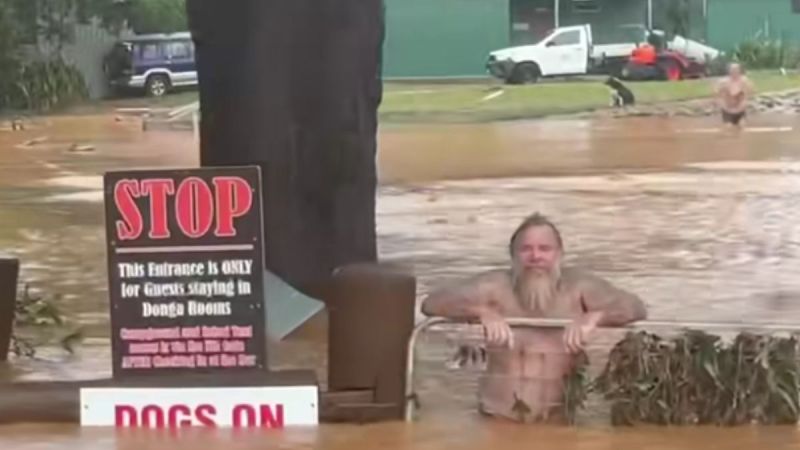
‘Jonesy’ told his rescuer ‘Yeah nah, all good’. Photo: Facebook/Gavin Dear
Miles said people were beginning to clean up – but he had a strong warning for north Queenslanders not to wear their favourite footwear.
“We’re asking anyone who is cleaning up mud or damage from floodwaters, please make sure you wear enclosed shoes. Today is not the day to wear thongs,” he said.
“We need enclosed shoes for everyone who could be in contact with contaminated floodwaters or mud.”
Meanwhile, the Bureau of Meteorology was forced to defend its weather predictions amid reports that the first alerts some residents received was when they were already on their rooftops.
Under heavy questioning from the media, BOM senior meteorologist Laura Boekeal acknowledged “there wasn’t a lot of lead time”, but she said the situation on Saturday had evolved rapidly.
“We used the best science to make those predictions, and we had to change that warning strategy quite quickly into the weekend as we got more information that those rain rates were likely to be higher than initially predicted,” she said.
“In the afternoon, we started calling and briefing emergency services, as well as local councils, and then we started issuing our first warnings by
around 9pm – so acknowledging there wasn’t a lot of lead time.
“We started seeing those rainfall rates really change in the early hours of Sunday morning.”
Emergency Management Minister Murray Watt said it was important to keep perspective about the bureau’s ability to predict such events.
“There are sometimes weather systems that, even with the best will in the world and the best possible science, can’t be absolutely predicted down to the precise detail,” he said.
“I was certainly seeing warnings on the general media, on social media, from the Bureau of Meteorology, for days leading up to this event that we were facing life-threatening flash-flooding. That was there for all people to see.”
Evacuating Wujal Wujal
Australian Defence Force Chinook helicopters were being called in on Tuesday to evacuate some 300 residents from isolated Wujal Wujal.
Chelepy said police were on the ground in Wujal Wujal, where several houses were lost due to flooding on Monday.
He said vulnerable people would be evacuated first, with police liaising directly with Cooktown council and state government agencies for alternate housing options.
Improving weather would allow helicopters to evacuate Wujal Wujal residents and get supplies of food and water to Cooktown on Tuesday, Chelepy said.
“We know we’ve only got another day’s worth of water in that town. We’ve had impacts to food, power, overall water and that’s why we’re doing the evacuation today,” he said.
“We couldn’t get in yesterday. But today it looks good, the weather’s clear.”
The evacuation came as the weather bureau reported floodwaters were receding across the region and Watt said the recovery effort could begin.
BOM said river levels across the Barron River catchment that moves through Cairns continued to ease and river levels at Cairns Airport were expected to fall below the minor flood level.
That meant Cairns Airport could reopen on Tuesday.
No further significant rainfall was forecast across the catchment for several days, BOM said.
But thousands of homes remain without power as energy crews from state energy distributor Ergon begin air patrols to assess grid damage.
Ergon said more than 2000 homes in Cairns and on the Cassowary Coast had had power restored. Floodwaters must recede further before crews can do a thorough damage assessment and tackle extensive repairs.
“I expect we’re going to see a very large amount of property damage … I think we’re up for a pretty expensive repair bill,” Watt told ABC TV.
He said the federal and state governments would look at making more financial assistance available to individuals, small businesses and primary producers, ahead of longer-term recovery payments for infrastructure.
“The Albanese government will be standing very closely with far north Queensland as it recovers,” he said.
-with AAP
